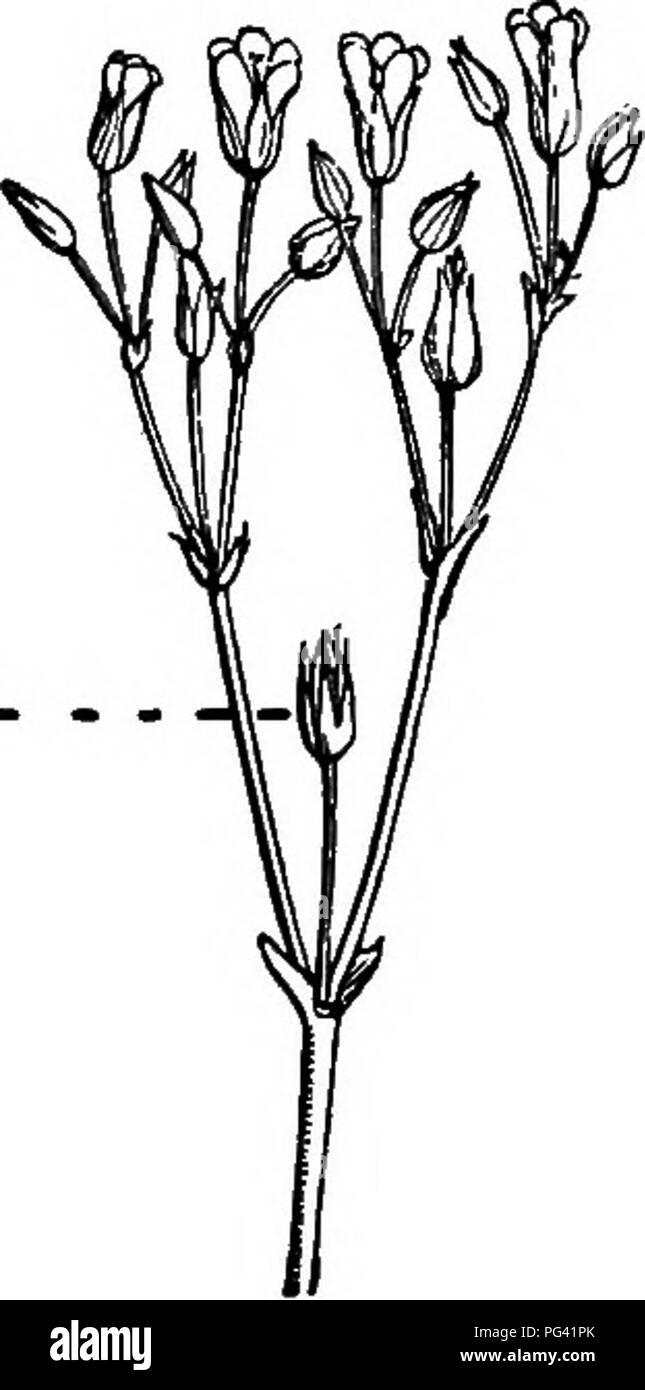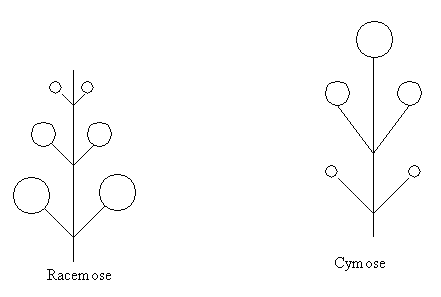

Hamelia (Polychasial and helicoid type), Nerium, Calotropisįig: Cymose Inflorescence Mixed Type of Inflorescence In this type, the peduncle terminates in flower, and many lateral branches arise from its base that also terminates in flowers. In this type, the peduncle terminates in flower and from the base of the peduncle, two lateral branches arise.ġ. Saraca, Heliotropism for Helicoid cyme and Boraginaceae, Begonia, Vine for Scorpioid cymeġ. Scorpioid cyme: The flower arrangement is in an alternate manner such that the inflorescence appears in a zigzag manner. Helicoid cyme: In this type of inflorescence, the flower always develops only on one side, either on the left or right.Ģ. The peduncle terminates in flower producing lateral branch at one side.ġ. Following are three types of cymose inflorescence:ġ. This arrangement is therefore also known as the basipetal succession. Here, the oldest flowers are thus terminal, and the young buds are lateral in position. In cymose inflorescence, the peduncle ends with a flower. Cymose Inflorescence (Determinate Inflorescence): If the older flowers (ray floret) are present on the outer periphery, while the young flowers (disc floret) are arranged towards the centre, it is called centripetal order.Ģ. In spadix inflorescence, the peduncle is thick, long and fleshy.Ģ. The flowers are small, sessile and unisexual and are enclosed by one or more green or colourful bracts.ġ. In corymb inflorescence, the peduncle is short, and all flowers are present at the same level because the lower flower has a much longer pedicel than the upper one.ġ. In umbel inflorescence, the flower stalks are more or less equal in length, and they arise from the same point.Ģ. The younger flowers are present in the centre, and the older ones are present in the periphery.ģ. At the base of the flower stalk, there is a whorl of bracts forming the involucre called a simple umbel.ġ. A branched umbel is known as a compound umbel.Ģ. Usually compound umbel consists of both involucral and involucre of bracts.ġ. In capitulum inflorescence, the growth of the peduncle is reduced.Ģ. The peduncle becomes broad, flattened convex or concave and consists of small sessile flowers called florets.

Members of Poaceae (Gramineae or grass family).ġ. In catkin inflorescence, the peduncle is thin, long and weak.Ģ. The flowers are sessile and unisexual.ġ.
#Cyme flower arrangement series#
The lower ones are called first glumes, and the upper ones are known as second glumes.Ĥ. A series of florets are present above the glumes. At the base of the rachilla, there are two boat-shaped sterile scales that are known as glumes, always placed one above the other on opposite sides. In the spike inflorescence, the peduncle is elongated, but the flowers are sessile.ġ. When the peduncle is branched, and each branch bears a spike inflorescence, then the small branch having a flower is called spikelet, and the arrangement is called spike of spikelet.Ģ. The main axis of this inflorescence is termed as rachilla (short axis), which bears one to many sessile or short-stalked flowers.ģ. Racemose inflorescence can be further divided into the following types:ġ. The peduncle of the branch bearing inflorescence is elongated, and flowers are pedicellate the inflorescence is called raceme type.ġ. When the peduncle is branched, and each branch bears a pedicellate flower arranged acropetally, then the inflorescence is called panicle or compound raceme type.ĭelonix regia (Gulmohar), Azadirachta indica (Neem), Cassia fistulaġ. older flowers are present on the lower side, and young flowers are arranged on the upper side. The flowers are arranged laterally in an acropetal manner, i.e. In racemose inflorescence, the branch does not terminate into a flower. Racemose Inflorescence (Indeterminate Inflorescence): In this type of inflorescence, the peduncle (flower axis) continues to grow.Let’s learn more about these types of inflorescence: Racemose inflorescence (Indeterminate Inflorescence), Cymose inflorescence (Determinate Inflorescence), Special types of Inflorescence and Mixed Inflorescence. There are broadly classified into four types, i.e. What are the Types of Inflorescence?Īn inflorescence is classified into different types based on the arrangement of flowers on a main axis or peduncle.

The main axis of inflorescence is called a peduncle. Inflorescence can also be defined as the group or cluster of flowers arranged on the stem which is composed of a main branch or cluster of branches.


 0 kommentar(er)
0 kommentar(er)
